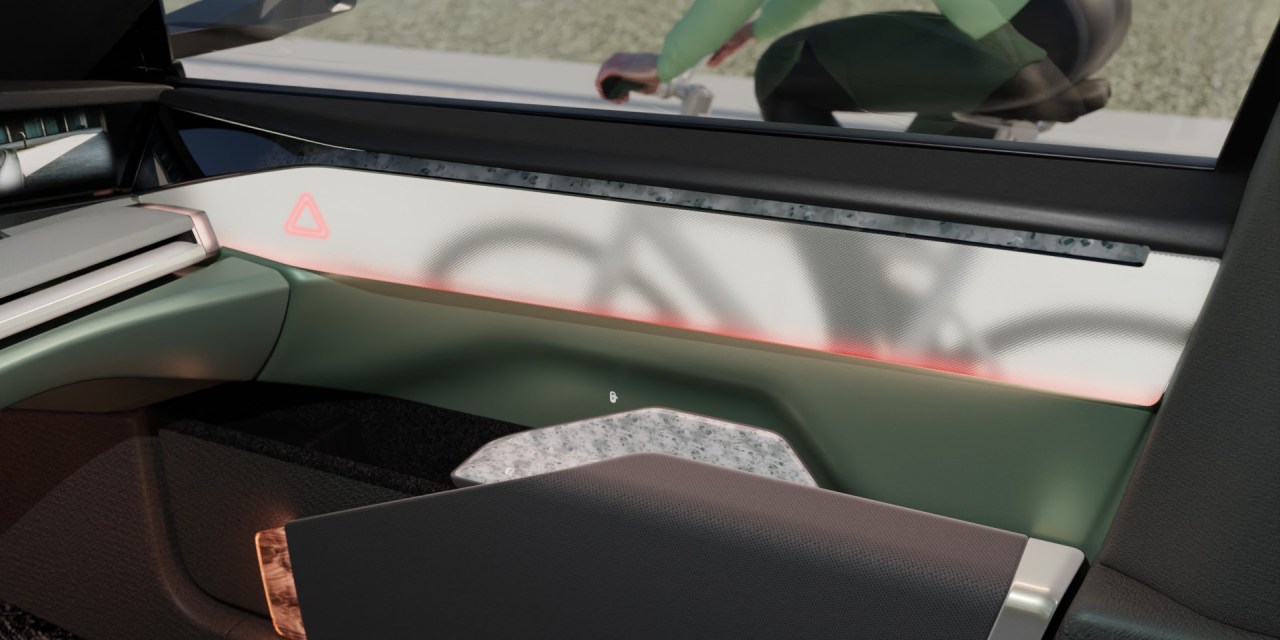Forvia, one of the world’s largest automotive suppliers born from the combination of Hella and Faurecia, has big plans for a more sustainable future. CEO Patrick Koller emphasized this commitment in a preview of its CES 2024 exhibit in offering technical solutions to support the necessary transformation of the automotive industry.
“The company is transparently committed to Science Based Target initiatives,” he said. “By 2045, all our emissions will be zero, and we are approaching two important milestones.”
By 2025, Forvia aims to be carbon neutral in terms of its Scope 1 and Scope 2 emissions, with Koller confirming the company is on track to meet those goals. By 2030, it should have reduced its Scope 3 emissions by 45%.
“This is a colossal task, and AI-formulated biobased materials will be central to the success of our commitment,” said Koller. “It’s a job you can come and measure at CES 2024, where each of our demonstrators is designed for Scope 3 in order to respond to the industry’s technical and technological evolution while reducing greenhouse gas emissions.”
Along that sustainable journey, the company is also committed to “experiences that matter to people.”
One of the key exhibits is its Horizon concept aimed at providing fresh user experiences in a mid-size SUV package. Its surfaces are transformed with high-tech lighting and projection technologies, ensuring safety for occupants and other traffic participants.
Selected lighting and sustainable materials communicate roominess and gracefulness, with no technology ”shouting at the occupants.” It’s all about serenity, says the company.
The human-machine interface features 3D graphics content with selection by eye tracking. The interaction model targets a safe but pleasing driving experience.
The interior can transform into various configurations. The front seats can take on a comfortable and relaxed position while the vehicle is recharging. The passenger seat is equipped with long-range tracks so it can be positioned in place of part of the rear bench, enabling its occupant to interact fully with rear passengers. A furniture-like table pod detaches from the instrument panel and moves backward with the front seat so the passenger can enjoy a dedicated work surface while broadening their visual horizon and increasing their sense of space.
Designed to meet the specific challenges of EVs (electric vehicles) while offering “unprecedented comfort,” the concept’s Supremo seat is also focused on sustainable design. Its structure is more compact than traditional seats, freeing up extra space for batteries and allowing rear passengers’ feet to fit comfortably under the front seats. When the vehicle is recharging, occupants can enjoy optimum comfort in a highly reclined position, thanks to the compact frame, and a pillow-soft headrest.
The occupants’ experience is transformed by integrating technologies into surfaces to create more intuitive, interactive, and personal experiences. The phygital cockpit, a convergence between the physical and digital realms, includes smart and dynamic lighting combined with sound and intuitive human-machine interaction to create a personalized cocoon with heating and cooling, and digital continuity for all passengers through convenient smartphone integration.
Front and center in the concept is Forvia’s AirVision, an integrated system solution that offers new ways of displaying information and creating immersive experiences through image reflection. The system offers a stable and vibration-free reflection by creating a 3D virtual image on a flat translucent surface integrated into the instrument panel, combining displays, lighting, surfaces, and structures in unique ways. This scalable system can replace cluster, center, and co-driver displays. It provides a clean interior design, decluttering the dashboard by replacing traditional display configurations and removing display frames, borders, and split lines.
In the lead-up to CES 2024, the company also received four innovation award accolades from the Consumer Technology Association in the Vehicle Tech & Advanced Mobility category.
“The CES is an opportunity to showcase the work of our 160,000 people,” said Koller. “These 4 CES Innovation Awards are recognizing their commitment and quality. The four awards also testify to the inventiveness of our teams, who are constantly looking for ways to anticipate our customers’ needs. Each of them meets our criteria for offering safer, cleaner, sustainable, and affordable mobility.”
Among Forvia’s award-winning entries is the Hella FlatLight µMX technology. Based on an LED light-guide concept with micro-optics smaller than a grain of salt, the tech is particularly flat and efficient, with the required installation space reduced by up to 90% at just 5 mm. Multiple color combinations of turn, stop, and taillight can be implemented in just one optical element. The technology requires up to 80% less energy compared to conventional LED taillights while maintaining the same performance and homogeneity. Its scalability will be demonstrated in 2024 when goes into series production as a rear combination lamp, then in 2025 in the front of a car for daytime running light, direction indicator, and position light in only one light element.
Also recognized was Forvia’s Skyline Immersive Display. The pillar-to-pillar display positioned at the intersection of a windshield and instrument panel creates a safer driving experience by reducing the re-direction of the driver’s attention from the road to displays. The high-resolution displays and human-machine interface appear only when required, reducing cognitive load, which Forvia says improves driver safety. Graphical content across all displays is driven by the same electronics, and HMI will consist of free-form, even 3D, and integrated into interior surfaces.
Also making the list of honorees was the eMirror Safe UX software platform. It builds on Forvia’s eMirror technology, which replaces conventional side and rearview mirrors with a camera-based system designed to provide drivers with better visibility, safety alerts, and fuel/energy efficiency. The software expands the driver’s field of view and reduces blind spots through features such as transparent view, reactive dimming, and advanced image processing. It saves power and diminishes distraction by tracking the driver’s gaze direction to dim displays not being viewed, and it improves visibility in challenging lighting and weather conditions. The software is hardware-agnostic, doesn’t require extra sensors, and can be installed or updated through over-the-air updates, providing compatibility with existing vehicles.
Lastly, Forvia was an honoree for its Light Tile, which provides a see-through view on vehicle door panels and creates an extended window effect. The company says it offers a new kind of advanced driving assistance system information. If any risk is detected before opening the door, information will appear through the transparent door to help occupants react in darkness or critical conditions where the human eye may not see properly and respond fast enough. The tech is integrated into the door panel upper area and provides a high-quality display of the vehicle environment, bringing the outside atmosphere into the vehicle. It is thin, typically 3 mm, and provides edge-to-edge homogeneity while allowing a scalable system of shape, size, resolution, and light output. It can also be used for other purposes such as dynamic ambient surface lighting. The transparent door uses existing eMirror cameras and an image distortion algorithm.
Kevin Jost contributed to this article.
- Forvia’s Skyline Immersive Display.
- Forvia FlatLight µMX.
- Forvia AirVision.
- Forvia eMirror Safe UX.
- Forvia Light Tile.

































































































